Dulcet.nl > Forum
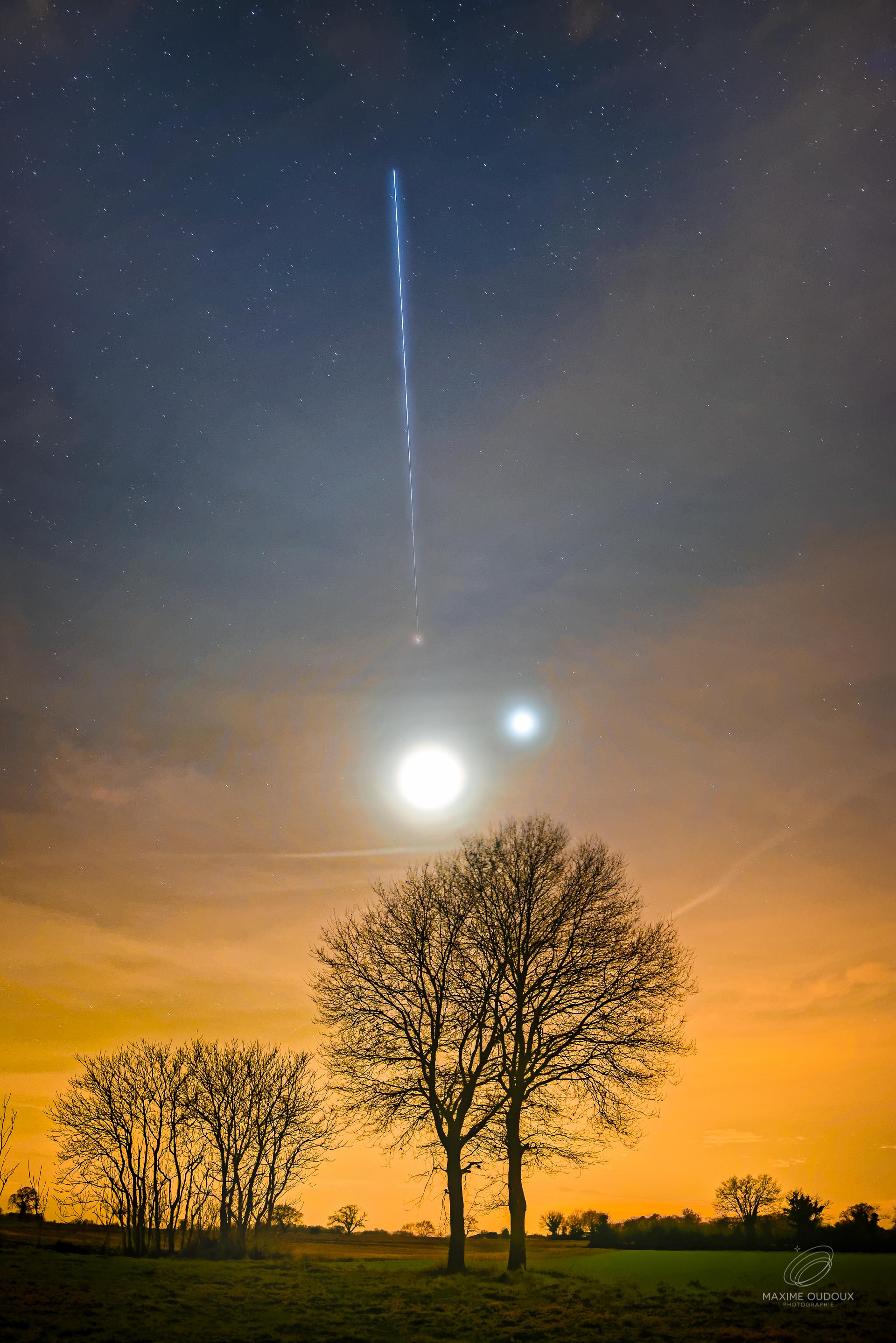
Conjunction of Four
Image Credit & Copyright: Maxime Oudoux
Explanation: On January 31, a waxing crescent Moon, brilliant Venus, and fainter Mars gathered in the fading twilight, hanging above the western horizon just after sunset on planet Earth. In this combined evening skyscape, the lovely celestial triangle is seen through clouds and haze. Still glinting in sunlight, from low Earth orbit the International Space Station briefly joined the trio that evening in skies near Le Lude, France. The photographer's line-of-sight to the space station was remarkably close to Mars as the initial exposure began. As a result, the station's bright streak seems to leap from the Red Planet, moving toward darker skies at the top of the frame.
https://apod.nasa.gov/apod/ap170204.html

The Porpoise Galaxy from Hubble
Image Credit: NASA, ESA, Hubble, HLA; Reprocessing & Copyright: Raul Villaverde
Explanation: What's happening to this spiral galaxy? Just a few hundred million years ago, NGC 2936, the upper of the two large galaxies shown, was likely a normal spiral galaxy -- spinning, creating stars -- and minding its own business. But then it got too close to the massive elliptical galaxy NGC 2937 below and took a dive. Dubbed the Porpoise Galaxy for its iconic shape, NGC 2936 is not only being deflected but also being distorted by the close gravitational interaction. A burst of young blue stars forms the nose of the porpoise toward the right of the upper galaxy, while the center of the spiral appears as an eye. Alternatively, the galaxy pair, together known as Arp 142, look to some like a penguin protecting an egg. Either way, intricate dark dust lanes and bright blue star streams trail the troubled galaxy to the lower right. The featured re-processed image showing Arp 142 in unprecedented detail was taken by the Hubble Space Telescope last year. Arp 142 lies about 300 million light years away toward the constellation, coincidently, of the Water Snake (Hydra). In a billion years or so the two galaxies will likely merge into one larger galaxy.
NASA link
Er is ook best veel keuze voor zoiets 🙂 Het is wonderlijk te zien hoe het universum er uit ziet.
If we knew what it was we were doing, it would not be called research, would it?
-Albert Einstein
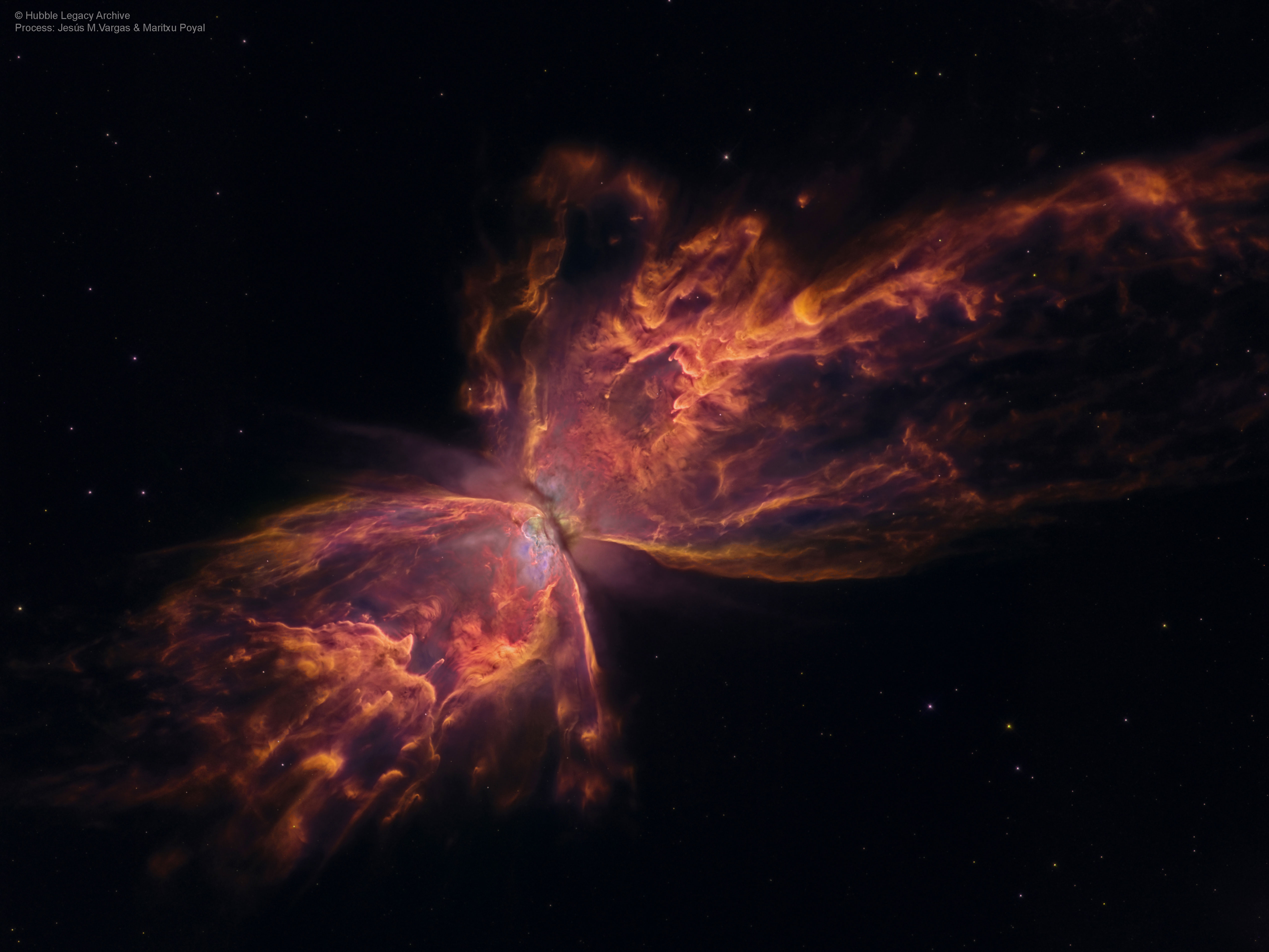
The Butterfly Nebula from Hubble
Image Credit: NASA, ESA, Hubble, HLA; Reprocessing & Copyright: Jesús M.Vargas & Maritxu Poyal
Explanation: The bright clusters and nebulae of planet Earth's night sky are often named for flowers or insects. Though its wingspan covers over 3 light-years, NGC 6302 is no exception. With an estimated surface temperature of about 250,000 degrees C, the dying central star of this particular planetary nebula has become exceptionally hot, shining brightly in ultraviolet light but hidden from direct view by a dense torus of dust. This sharp close-up of the dying star's nebula was recorded by the Hubble Space Telescope and is presented here in reprocessed colors. Cutting across a bright cavity of ionized gas, the dust torus surrounding the central star is near the center of this view, almost edge-on to the line-of-sight. Molecular hydrogen has been detected in the hot star's dusty cosmic shroud. NGC 6302 lies about 4,000 light-years away in the arachnologically correct constellation of the Scorpion (Scorpius).
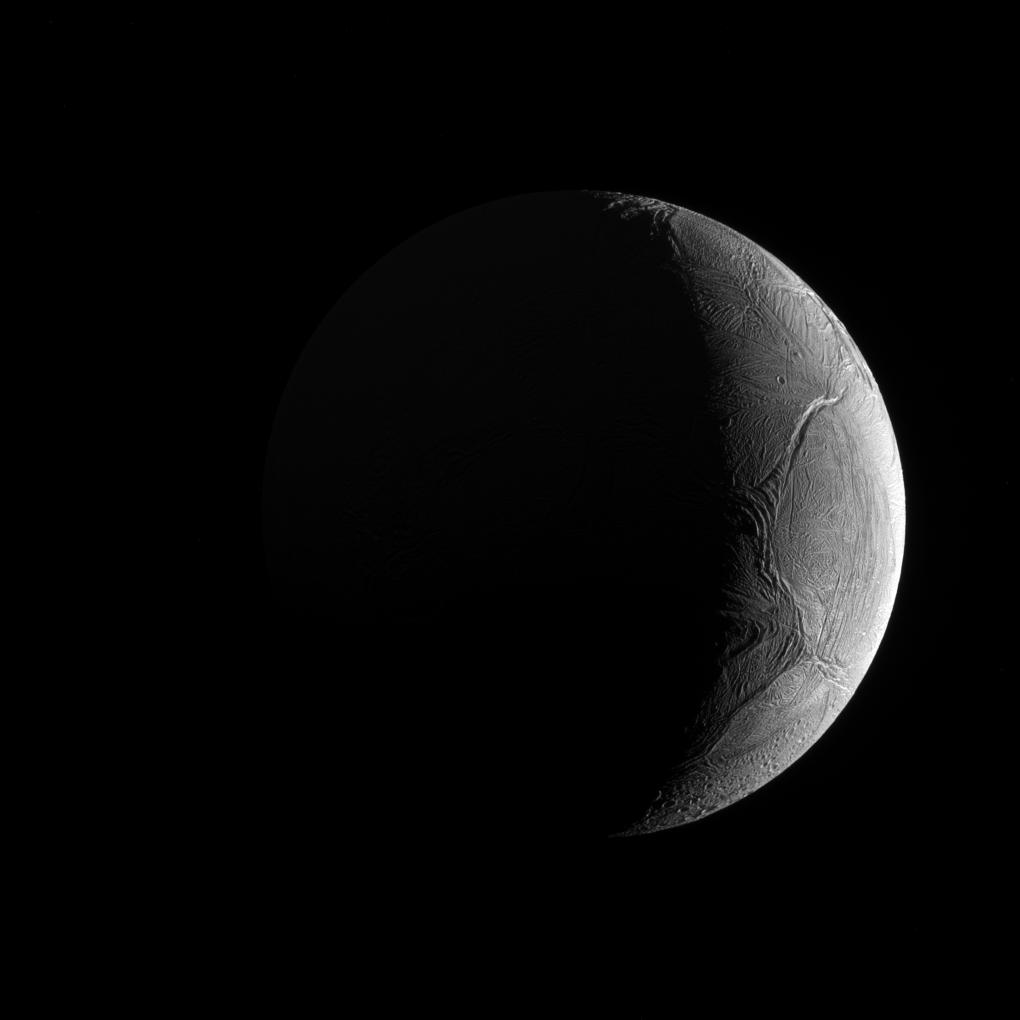
Crescent Enceladus
Image Credit: Cassini Imaging Team, SSI, JPL, ESA, NASA
Explanation: Peering from the shadows, the Saturn-facing hemisphere of tantalizing inner moon Enceladus poses in this Cassini spacecraft image. North is up in the dramatic scene captured last November as Cassini's camera was pointed in a nearly sunward direction about 130,000 kilometers from the moon's bright crescent. In fact, the distant world reflects over 90 percent of the sunlight it receives, giving its surface about the same reflectivity as fresh snow. A mere 500 kilometers in diameter, Enceladus is a surprisingly active moon. Data collected during Cassini's flybys and years of images have revealed the presence of remarkable south polar geysers and a possible global ocean of liquid water beneath an icy crust.
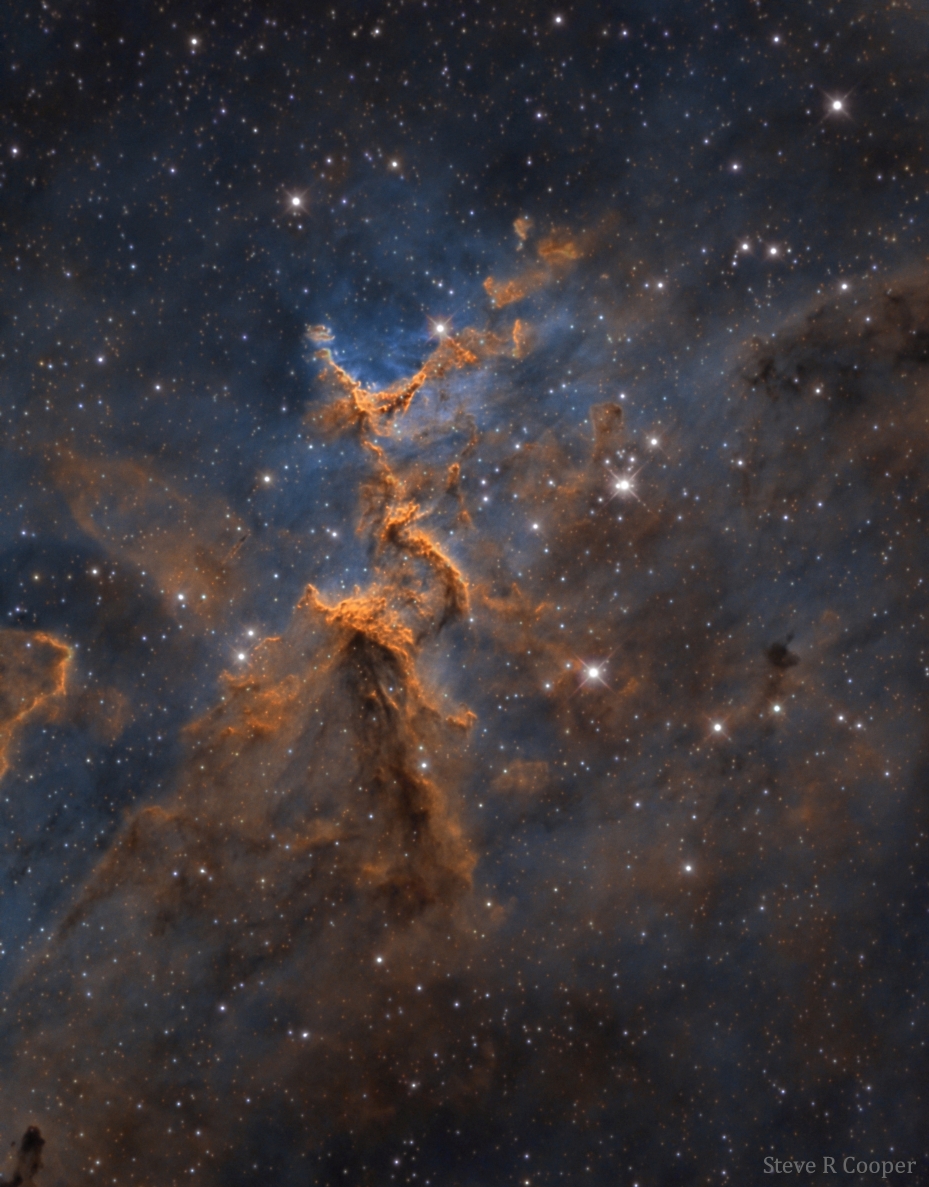
Melotte 15 in the Heart
Image Credit & Copyright: Steve Cooper
Explanation: Cosmic clouds form fantastic shapes in the central regions of emission nebula IC 1805. The clouds are sculpted by stellar winds and radiation from massive hot stars in the nebula's newborn star cluster, Melotte 15. About 1.5 million years young, the cluster stars are scattered in this colorful skyscape, along with dark dust clouds in silhouette against glowing atomic gas. A composite of narrowband and broadband telescopic images, the view spans about 15 light-years and includes emission from ionized hydrogen, sulfur, and oxygen atoms mapped to green, red, and blue hues in the popular Hubble Palette. Wider field images reveal that IC 1805's simpler, overall outline suggests its popular name - The Heart Nebula. IC 1805 is located about 7,500 light years away toward the boastful constellation Cassiopeia.
Ik vraag me af in wat oor kleuren het werkelijk te zien is. Voor zover ik het begrijp zijn de kleuren toegevoegd.
Maar goed, het is evenzogoed toch indrukwekkend.
If we knew what it was we were doing, it would not be called research, would it?
-Albert Einstein
Almost every photograph of astronomical bodies that you see, whether on the Internet, or in a book, magazine, newspaper, or television program, is a 'false' image in one or more ways. For planets, the photographs generally (although not always) show the correct colors, but the pictures usually show those colors far more intensely, and with much higher contrast than they would appear in real life. This is done partly to make the pictures more attractive, and partly to allow low-contrast features which would be hard to discern in a true-color photograph to be more easily observed.
http://cseligman.com/text/pixnotes.htm
Deze zijn wel in true color
http://pennastroimaging.org/?page_id=728
Iets minder spectaculair 😉
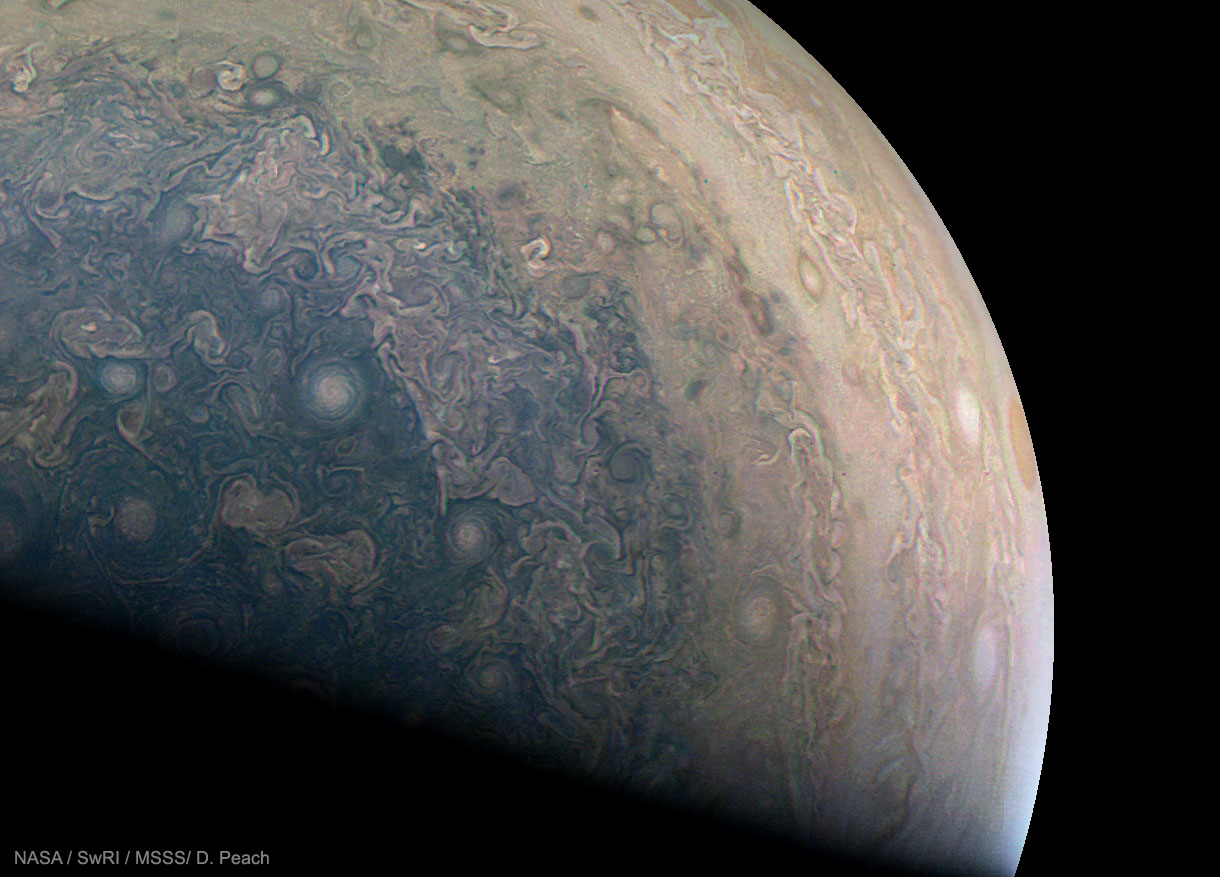
Cloud Swirls around Southern Jupiter from Juno
Image Credit: NASA, JPL-Caltech, SwRI, MSSS; Processing: Damian Peach
Explanation: Juno just completed its fourth pass near Jupiter. Launched from Earth in 2011 and arriving at Jupiter just last July, robotic Juno concluded its latest elliptical orbit around our Solar System's largest planet 11 days ago. Pictured here from that pass is a new high-resolution image of the southern hemisphere of Jupiter featuring a mesmerizing tapestry of swirling cloud systems. The terminator between day and night cuts diagonally across the bottom, meaning that the Sun is positioned off the top right. Large Oval BA is visible in orange on the far right. Reasons for the details and colors of Jupiter's cloud swirls are currently unknown. Juno planned six year mission will study Jovian giant in new ways, including trying to determine if beneath its thick clouds, Jupiter has a solid core.
© NASA
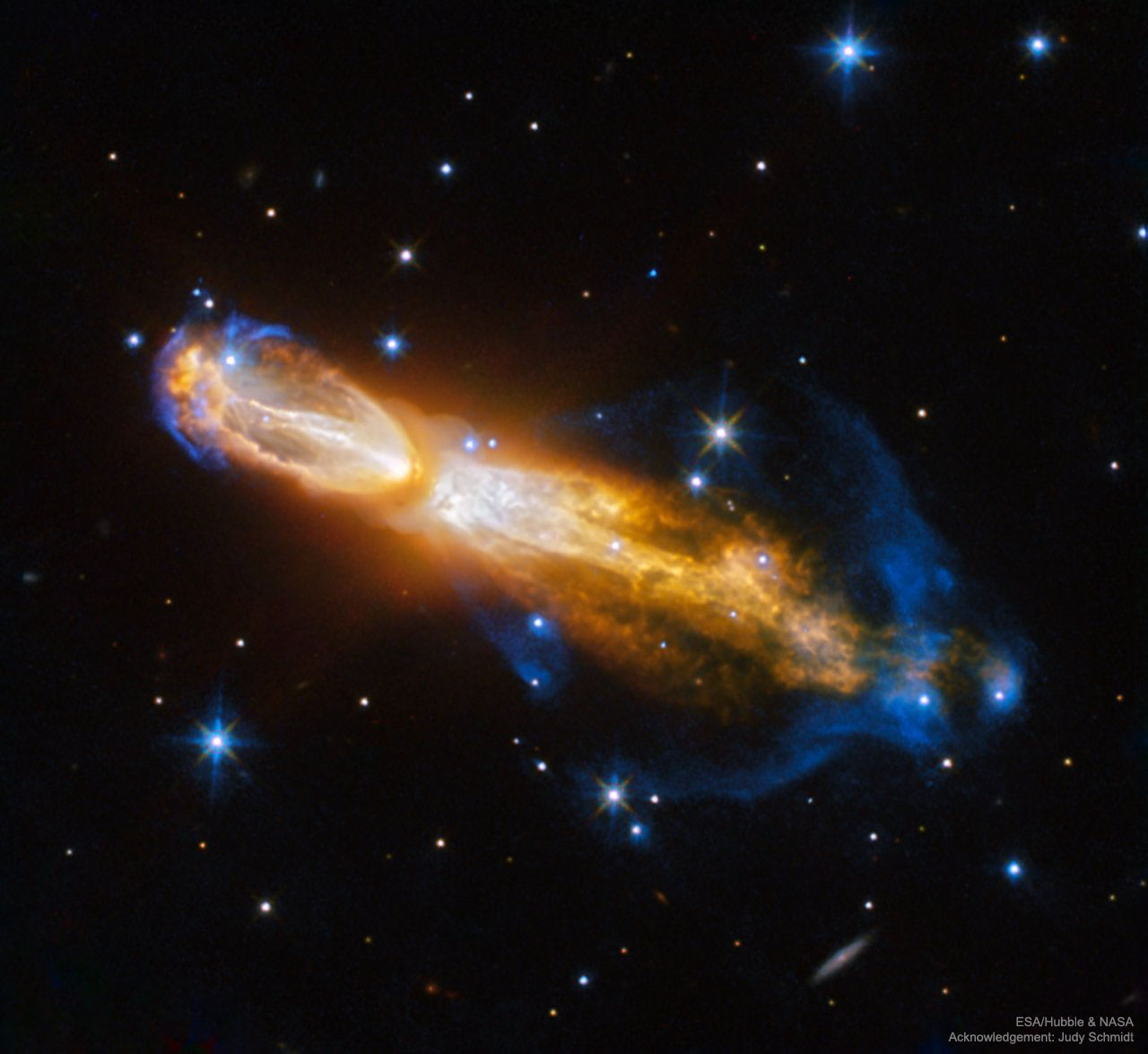
The Calabash Nebula from Hubble
Image Credit: NASA, ESA, Hubble, MAST; Acknowledgement: Judy Schmidt
Explanation: Fast expanding gas clouds mark the end for a central star in the Calabash Nebula. The once-normal star has run out of nuclear fuel, causing the central regions to contract into a white dwarf. Some of the liberated energy causes the outer envelope of the star to expand. In this case, the result is a photogenic proto-planetary nebula. As the million-kilometer per hour gas rams into the surrounding interstellar gas, a supersonic shock front forms where ionized hydrogen and nitrogen glow blue. Thick gas and dust hide the dying central star. The Calabash Nebula, also known as the Rotten Egg Nebula and OH231.8+4.2, will likely develop into a full bipolar planetary nebula over the next 1000 years. The nebula, featured here, is about 1.4 light-years in extent and located about 5000 light-years away toward the constellation of Puppis.
Laatste bericht: Humor Ons nieuwste lid: 932226 Recente berichten Ongelezen berichten Tags
Forum iconen: Forum bevat geen ongelezen berichten Forum bevat ongelezen berichten
Onderwerp pictogrammen: Niet beantwoord Beantwoord Actief Populair Sticky Afgekeurd Opgelost Privé Gesloten
Wilders: Islam, een te respecteren godsdienst!!
Ik kende het filmpje niet, en het ziet er ook wel wat o...
Door Rick , 1 maand geleden
Ze was al een tijdje vermist, maar nu is ook duidelijk ...
Door Rick , 5 maanden geleden
Alex Jones terug op X (Twitter)
De veroordeelde complotidioot Alex Jones krijgt waarsch...
Door Rick , 5 maanden geleden
Niks wappie gerelateerd, maar iets iets verder terug in...
Door Rick , 6 maanden geleden
Complot idioot Wouter Raatgever heeft niks geleerd
Wouter Raatgever, die samen met Joost Knevel en Micha K...
Door Rick , 6 maanden geleden
De gedachtengang van soevereinen in Nederland
De huidige soevereinen hebben een wel heel vreemd beeld...
Door Rick , 6 maanden geleden
Niet vergeten: Dit is 2023 Ongelooflijk. Gristelij...
Door Rick , 6 maanden geleden
De schimmige wereld van ufo’s…
POLITICO: Zoekt het Pentagon naar…
Laat u niks wijsmaken: Martijn…
President Trump
Het Dyatlov Pass incident
Seti doet er nog een schepje bovenop. https://twitter.com/SPACEdotcom/status/1780567442076414014
Wouter Raatgever is alweer even op vrije voeten, maar gaat…
kars is net zo gek als kat.
Ken je geschiedenis. Covid is nog steeds niet verdwenen en…
Volume 1 betekent dat er wellicht een vervolg komt?